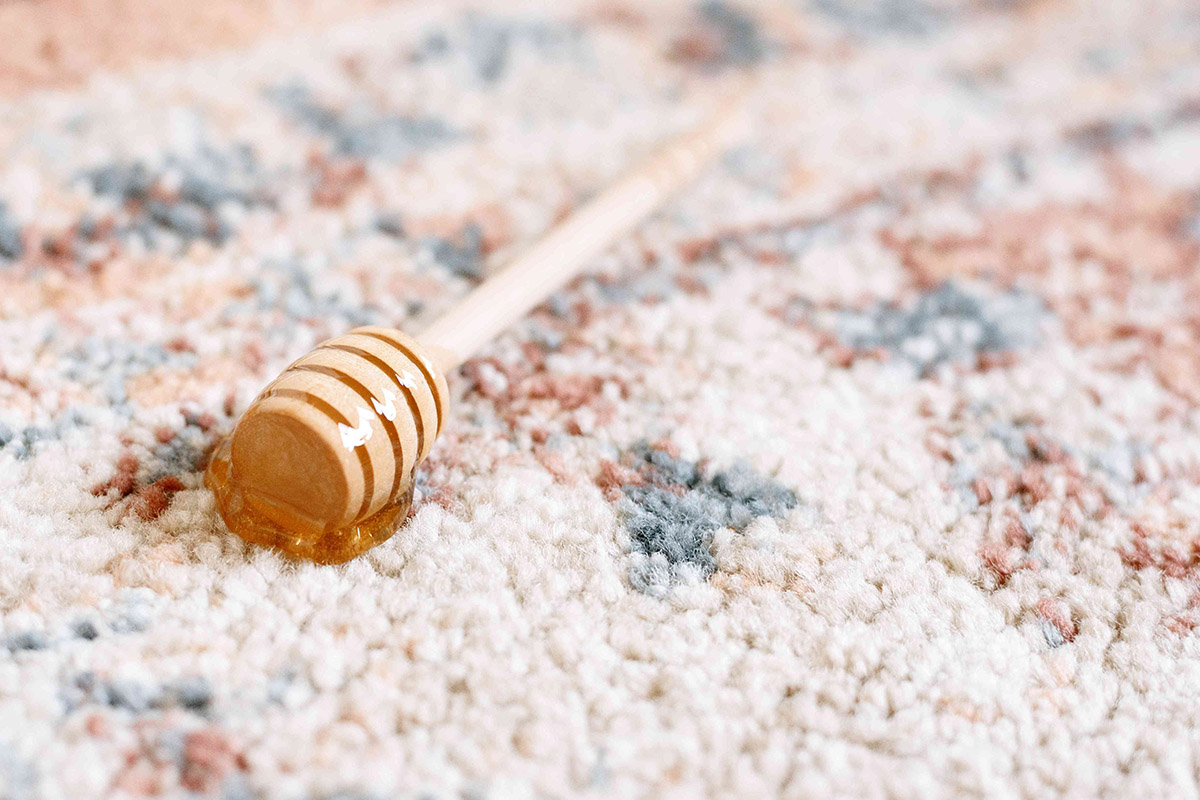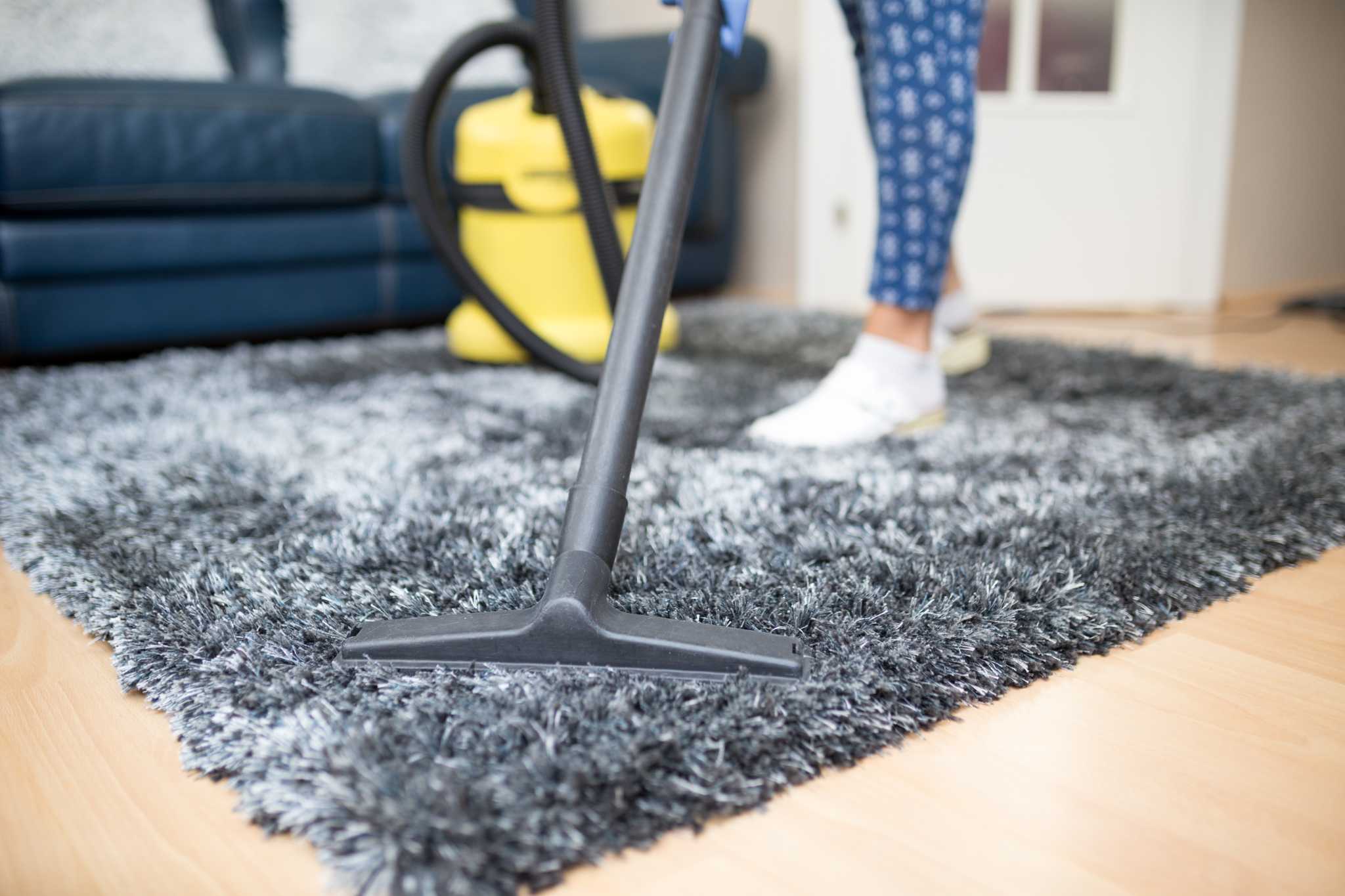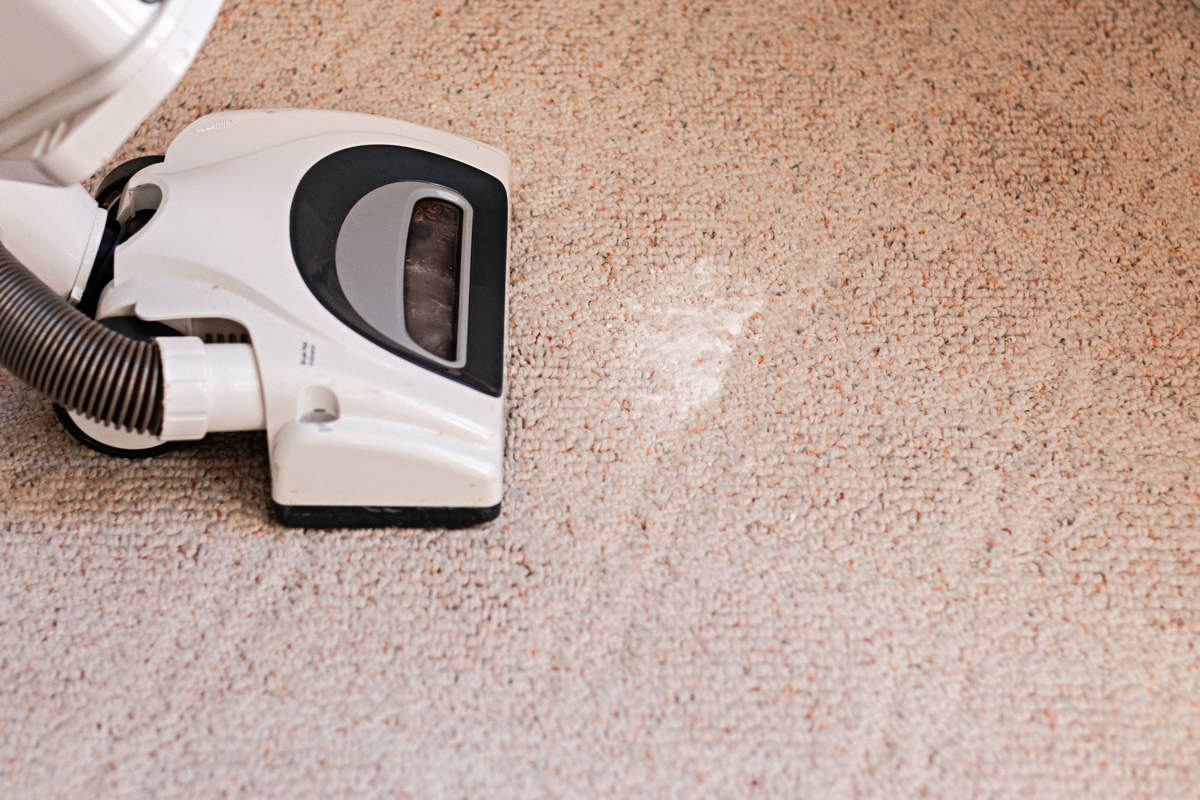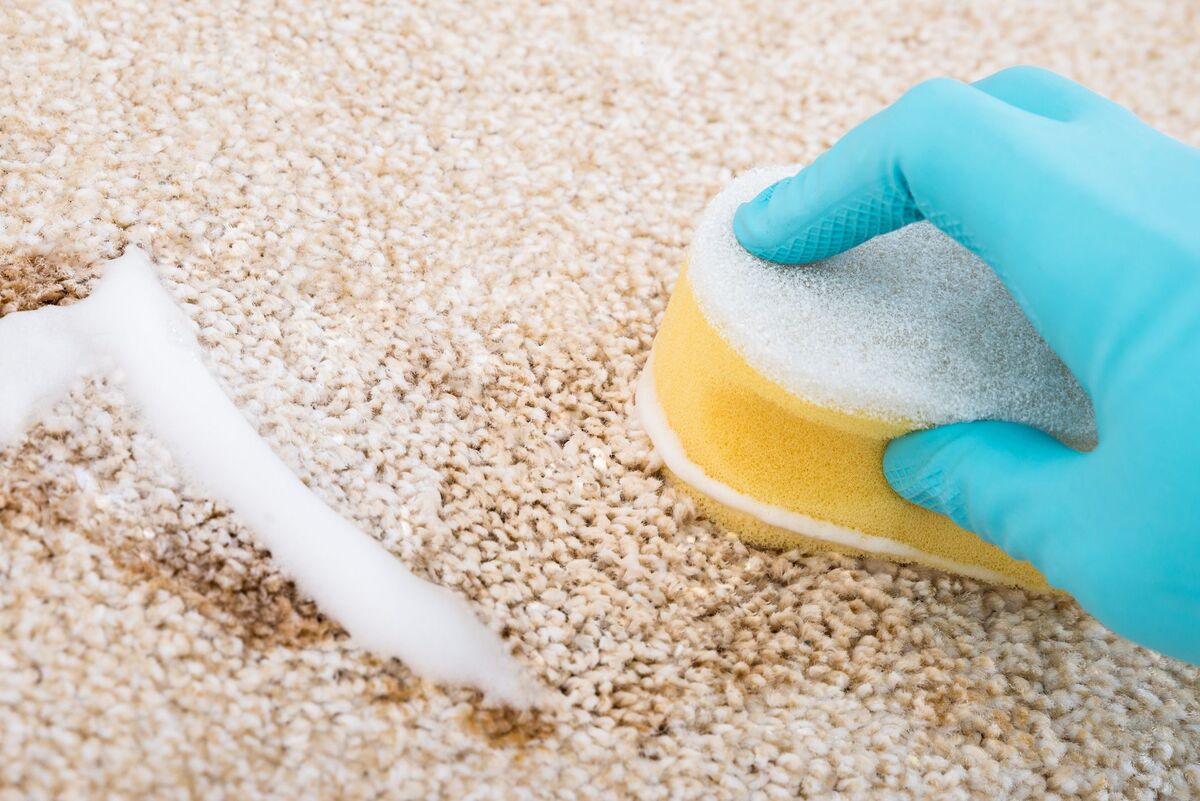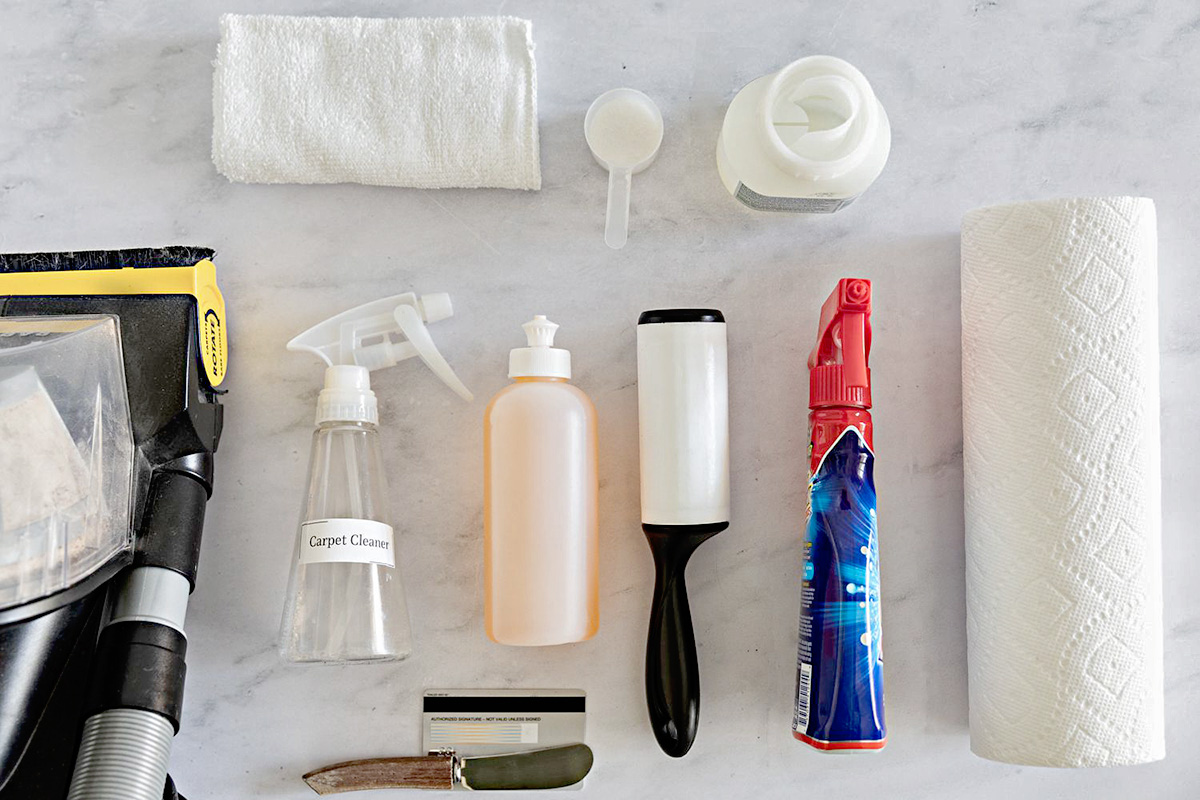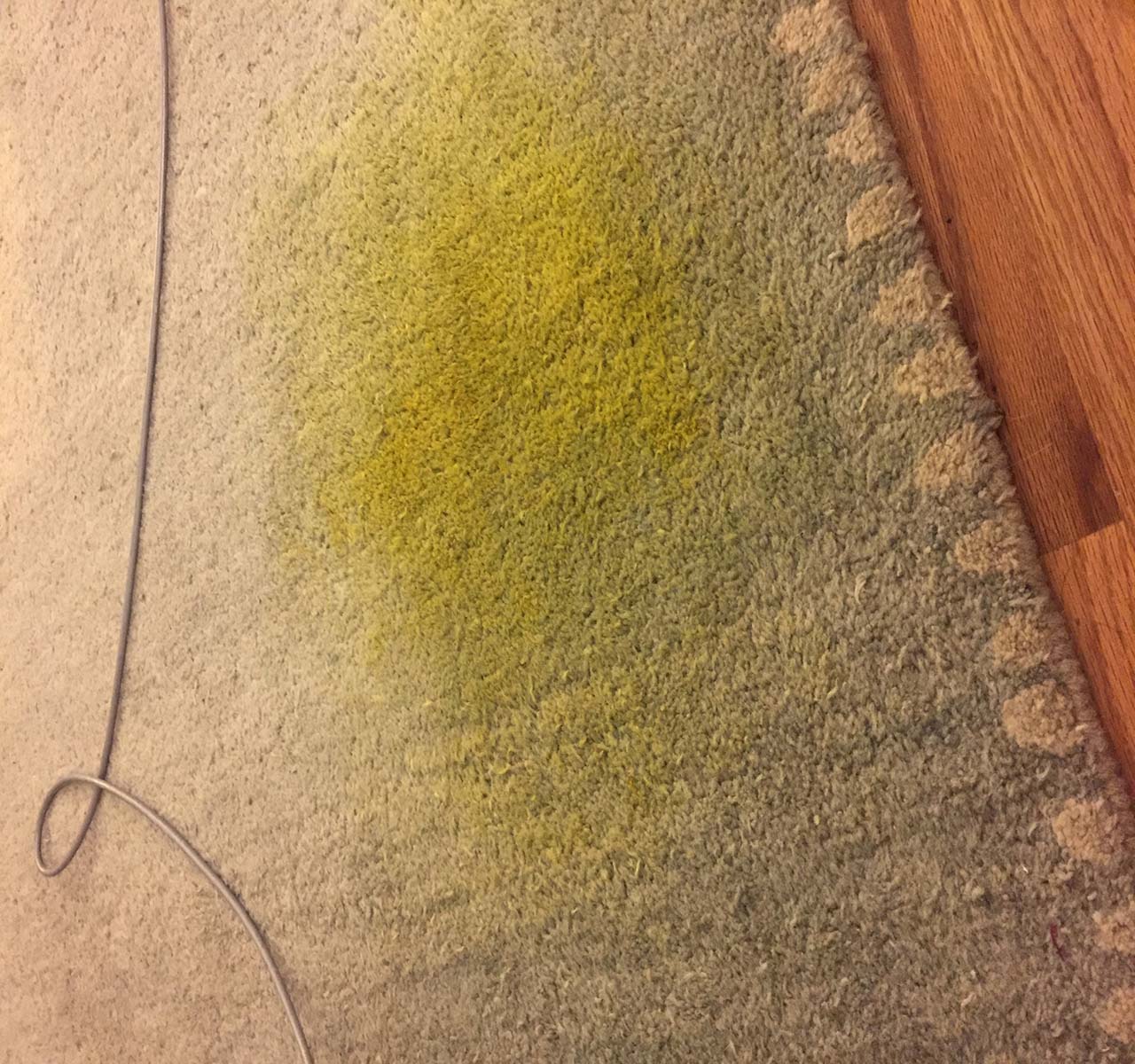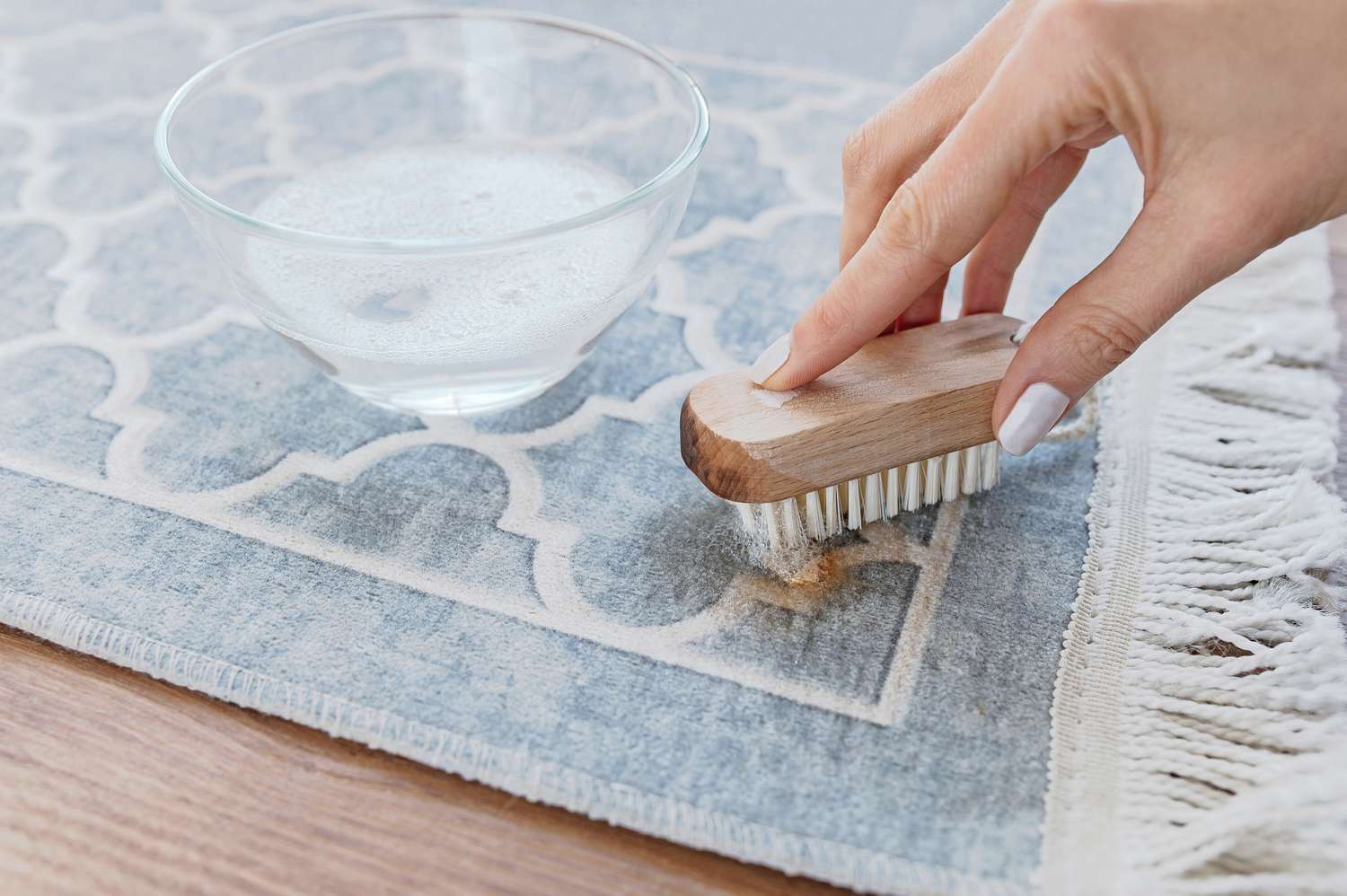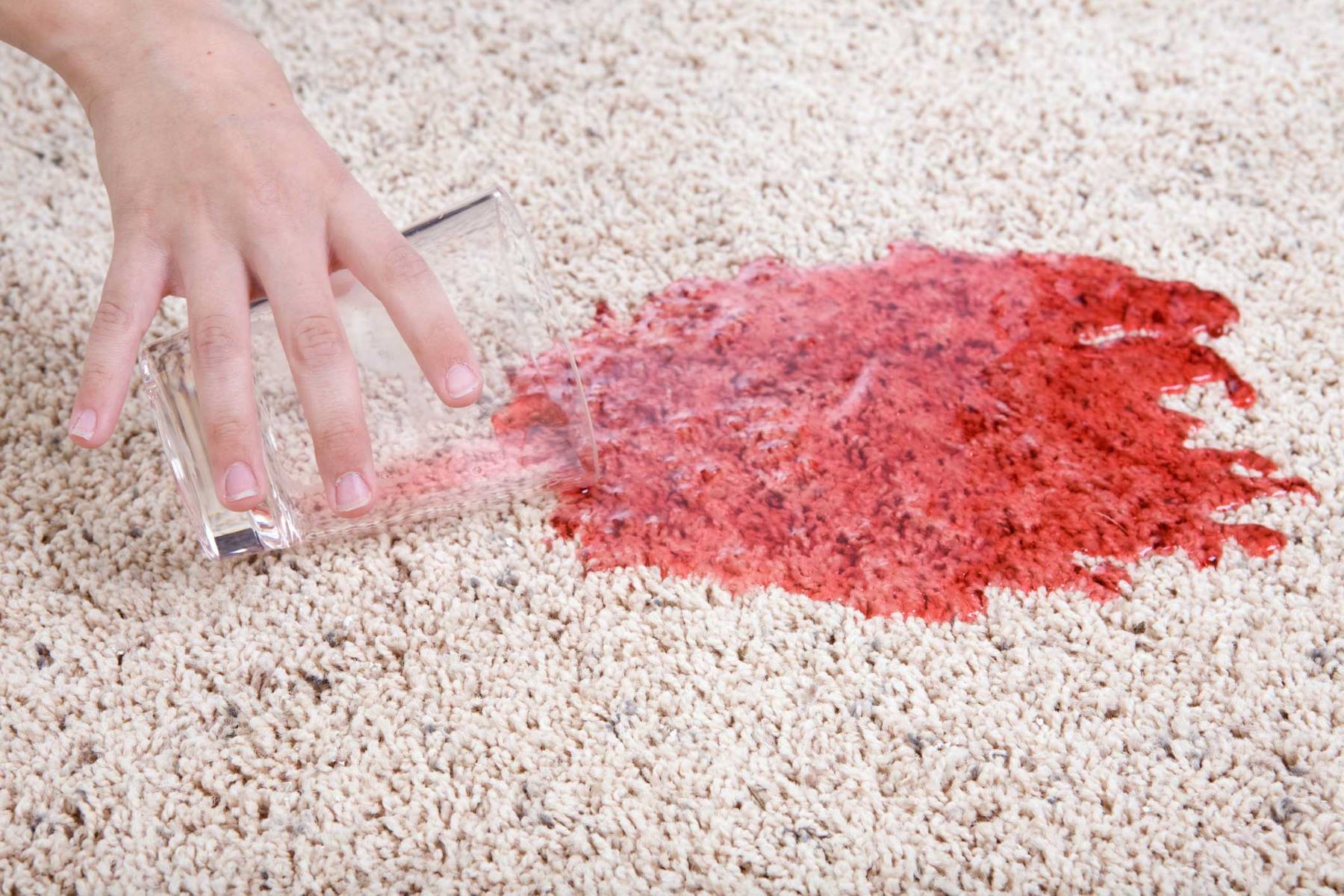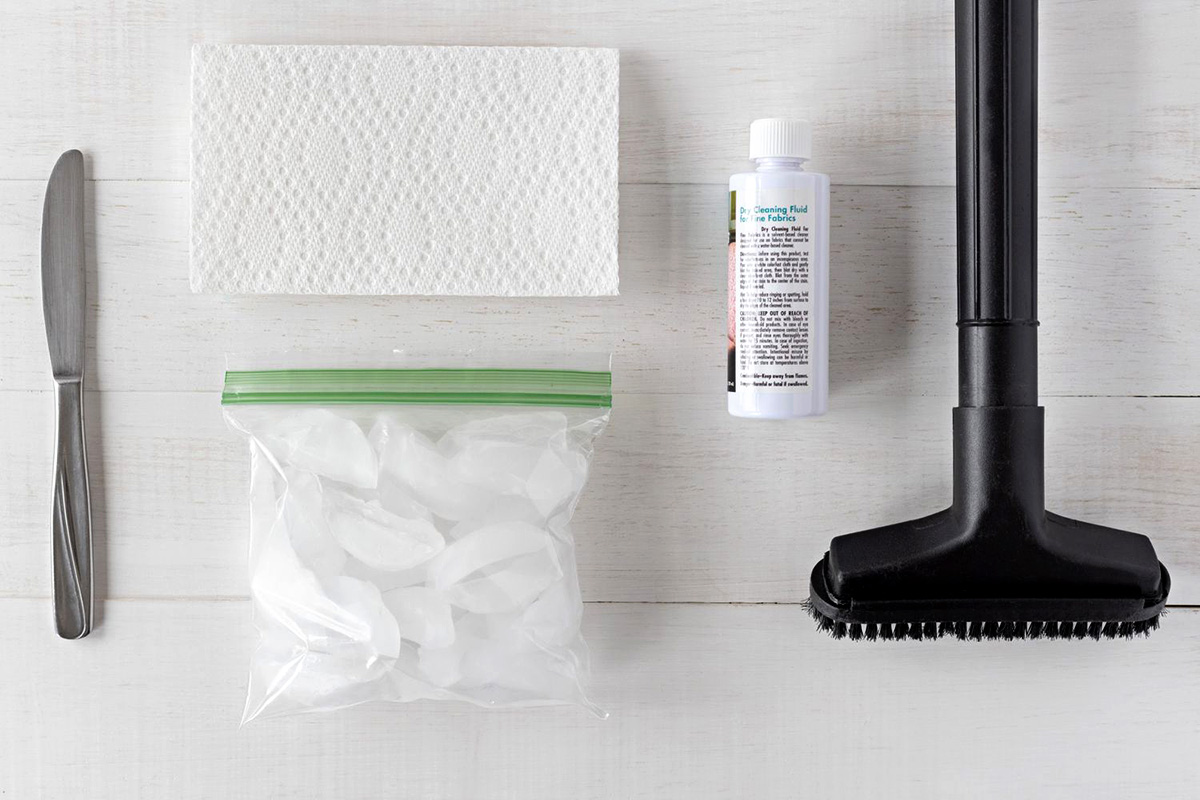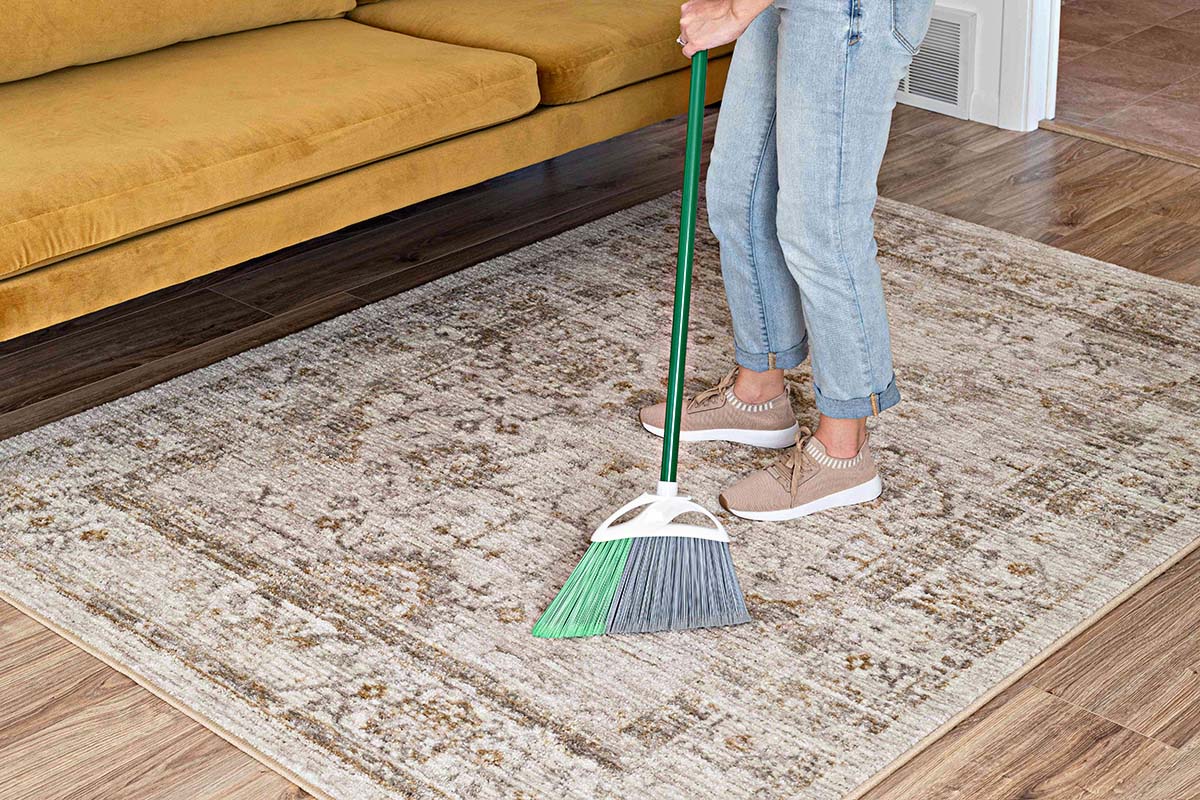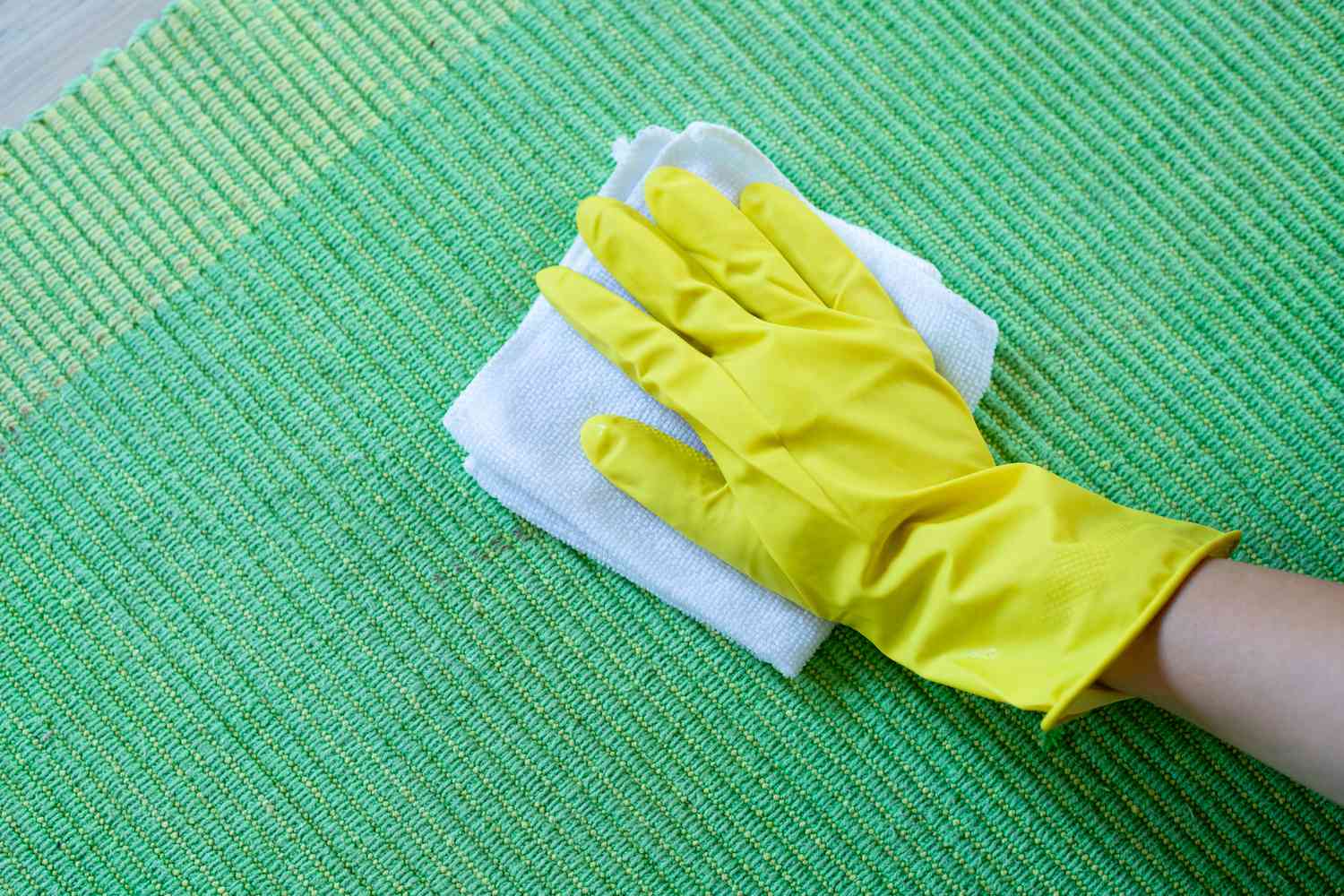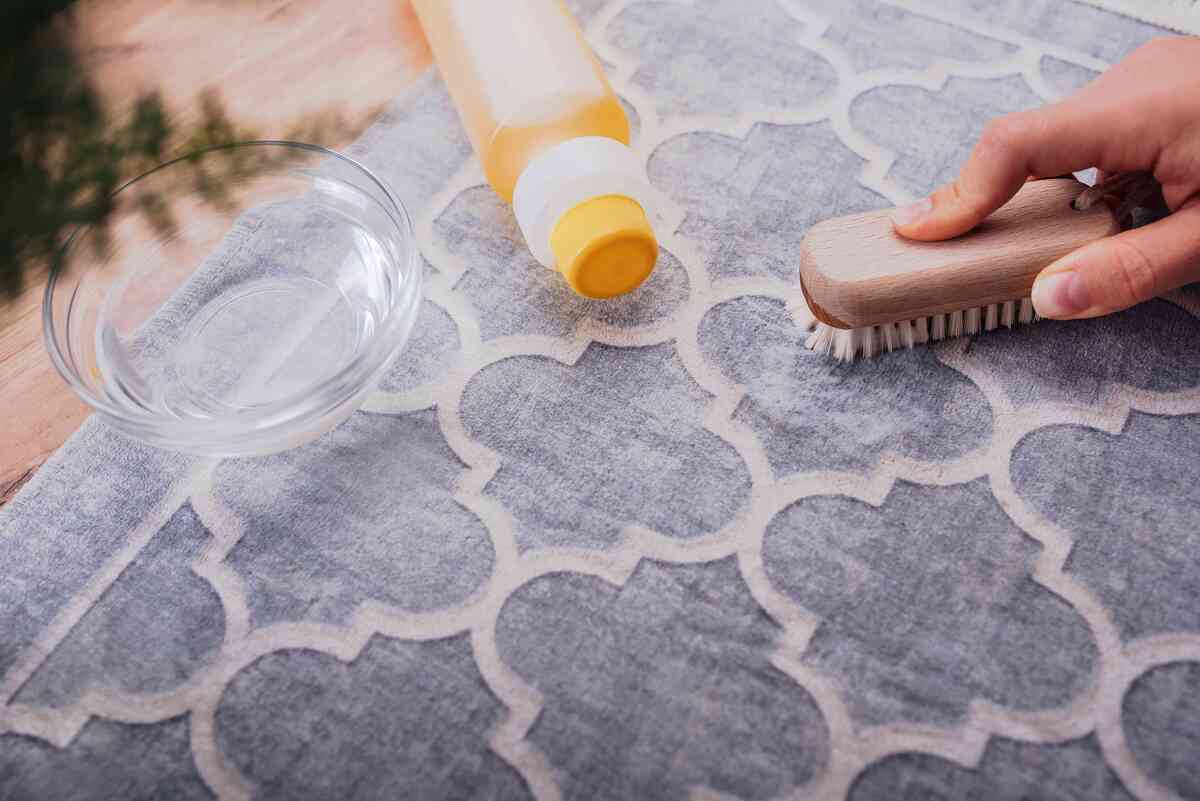

Articles
How To Get Tree Sap Out Of A Carpet
Modified: September 1, 2024
Learn effective techniques to remove tree sap stains from your carpet with these helpful articles. Say goodbye to sticky messes and restore your carpet's pristine condition!
(Many of the links in this article redirect to a specific reviewed product. Your purchase of these products through affiliate links helps to generate commission for Storables.com, at no extra cost. Learn more)
Introduction
Welcome to our guide on how to get tree sap out of a carpet. Picture this: you’ve had a lovely day outdoors, enjoying the shade of a beautiful tree, only to find that some sticky tree sap has found its way onto your carpet. Whether it’s from a stray branch or your shoes, tree sap can be a nightmare to deal with. But fear not! With the right techniques and supplies, you can effectively remove tree sap from your carpet and restore its pristine condition.
Before we dive into the methods of sap removal, let’s take a moment to understand what tree sap is and why it can be problematic for carpets. Tree sap, or resin, is the sticky substance that oozes out of trees when their bark is punctured or damaged. It acts as a defense mechanism, sealing the wound and protecting the tree from insects and infections. While it may have its benefits in nature, tree sap is not a friend to your carpet.
Removing tree sap from your carpet is crucial for several reasons. Firstly, sap can harden and become difficult to remove if left untreated. The longer you wait, the more it seeps into the fibers, making the task even more challenging. Secondly, tree sap is sticky and attracts dirt and debris, causing unsightly stains on your carpet. These stains can be particularly stubborn and ruin the overall appearance of the carpet.
To effectively remove tree sap from your carpet, you will need a few supplies. These include ice cubes or a freezer pack, rubbing alcohol, a clean cloth or sponge, a commercial sap remover (if available), dish soap, water, and a carpet cleaner (optional). Having these supplies on hand will ensure you’re prepared for any sap-related mishaps.
Now, let’s explore various methods you can use to get tree sap out of your carpet. Keep in mind that different methods may work better on different types of carpets, so it’s important to test the method on a small, inconspicuous area of your carpet before proceeding with the rest of it. With a little patience and elbow grease, you’ll have your carpet sap-free in no time.
Key Takeaways:
- Act quickly to remove tree sap from your carpet to prevent hardening and staining. Use gentle methods like freezing, rubbing alcohol, or dish soap to protect your carpet fibers.
- Consider professional help if DIY methods fail to remove stubborn tree sap stains from your carpet. Follow instructions, test on a small area, and prioritize carpet maintenance for best results.
Read more: How To Get Coffee Out Of A Carpet
Understanding Tree Sap
Before we delve into the methods of removing tree sap from your carpet, it’s essential to understand the nature of tree sap and why it can be challenging to deal with. Tree sap is a thick, sticky substance that is produced by trees when their bark is damaged or punctured. It serves as a natural defense mechanism for the tree, helping to seal wounds and prevent the entry of insects, pathogens, and other harmful elements.
Tree sap contains a mixture of organic compounds, including sugars, resins, and oils. These components not only provide nourishment for the tree but also contribute to the stickiness and adhesive properties of the sap. When tree sap comes into contact with a surface, it has a tendency to adhere strongly, making it difficult to remove.
Understanding the properties of tree sap is important because it helps us determine the most effective methods for removing it from different surfaces. Carpets, being porous and absorbent, can be particularly challenging when it comes to removing tree sap. The sticky nature of the sap causes it to adhere to carpet fibers, making it stubborn to remove.
In addition to its stickiness, tree sap can also harden over time. When exposed to the air, the sap can undergo polymerization, resulting in a thicker and more solid consistency. This makes it even more difficult to remove from carpet fibers.
Tree sap can also stain carpets if left untreated. As sap dries, it can trap dirt, dust, and other particles, leading to discoloration and unsightly stains on your carpet. These stains can be particularly stubborn to remove, necessitating prompt and effective action to prevent permanent damage to your carpet.
Now that we have a better understanding of what tree sap is and why it can be problematic for carpets, let’s move on to the methods we can use to remove it. By following these techniques, you’ll be able to effectively tackle tree sap stains and restore the beauty of your carpet.
Importance of Removing Tree Sap from Carpet
When it comes to maintaining the cleanliness and appearance of your carpet, removing tree sap is of utmost importance. Aside from being unsightly, tree sap can cause various issues if left untreated. Let’s take a closer look at the importance of removing tree sap from your carpet.
First and foremost, tree sap can harden over time. When it dries and solidifies, it becomes much more challenging to remove from carpet fibers. The longer you wait, the more the sap seeps into the carpet, making it more difficult to eradicate completely. Therefore, it’s crucial to address tree sap stains as soon as they occur to prevent them from becoming more stubborn and permanent.
Another reason to remove tree sap from your carpet is that it is sticky and can attract dirt, dust, and other debris. When sap is left untouched, it acts as a magnet for these particles, causing them to adhere to the carpet fibers. This can result in the formation of dark and unattractive stains, further compromising the overall appearance of your carpet.
In addition to potential stains, tree sap can also create a tacky texture on your carpet. This stickiness can make it uncomfortable to walk on and can even result in the transfer of sap onto other surfaces in your home. By promptly removing the sap, you can restore your carpet’s softness and prevent any unwanted transfer of the sticky substance.
Furthermore, leaving tree sap on your carpet for an extended period may lead to damage. The acidic properties of sap can cause degradation of the carpet fibers over time, resulting in weakened spots or discoloration. By removing the sap promptly, you can mitigate the risk of long-term damage and keep your carpet in pristine condition.
Lastly, keeping an impeccable carpet is important for the overall cleanliness and hygiene of your home. Carpets can trap allergens, dust mites, and other pollutants, contributing to poor indoor air quality. Cleaning your carpet regularly and removing tree sap and other stains helps maintain a healthy living environment and reduces the risk of respiratory issues and allergies.
In summary, removing tree sap from your carpet is crucial to prevent it from hardening, attracting dirt, compromising texture, causing damage, and maintaining the cleanliness and hygiene of your home. Now that we understand the importance of removing tree sap, let’s explore the various methods to tackle this issue effectively.
Supplies Needed
Before you begin the process of removing tree sap from your carpet, it’s important to gather the necessary supplies. Having the right tools and materials on hand will make the task more manageable and increase your chances of success. Here are the supplies you will need:
- Ice cubes or a freezer pack: Cold temperatures help to harden the sap, making it easier to remove. Ice cubes or a freezer pack can be used to chill the sap and minimize its stickiness.
- Rubbing alcohol: Rubbing alcohol is an effective solvent that can dissolve tree sap. It helps to break down the sap and make it easier to remove from the carpet fibers.
- A clean cloth or sponge: You’ll need a cloth or sponge to apply the rubbing alcohol and blot the sap from the carpet. Make sure the cloth or sponge is clean and absorbent to effectively lift the sap.
- Commercial sap remover (optional): If available, you can use a commercial sap remover specifically designed for removing tree sap. These products are formulated to break down the sap and facilitate its removal. Follow the instructions on the product label for the best results.
- Dish soap and water: A mixture of mild dish soap and water can be used to clean the affected area after removing the sap. This solution helps to remove any residual sap or cleaning agents from the carpet.
- Carpet cleaner (optional): If you have a carpet cleaner at your disposal, it can be useful for deep-cleaning the carpet after sap removal. Carpet cleaners provide a thorough cleaning, ensuring that no traces of sap or cleaning agents are left behind.
- A plastic scraper or credit card: In some instances, you may need a plastic scraper or credit card to gently scrape off any hardened sap from the surface of the carpet. Be careful not to damage the carpet fibers while doing this.
- Paper towels or a clean, dry cloth: You’ll need paper towels or a dry cloth to blot the carpet and remove excess moisture during the cleaning process. These absorbent materials help to speed up the drying time and prevent any potential damage to the carpet.
- Vacuum cleaner: Lastly, a vacuum cleaner will be necessary to remove any loose dirt or debris from the carpet before and after the sap removal process. Vacuuming helps to prepare the carpet for cleaning and ensures a thorough result.
By gathering these supplies before starting the sap removal process, you’ll be well-equipped to tackle the problem effectively. Now that you have your tools ready, let’s explore the various methods of removing tree sap from your carpet.
Method 1: Freezing the Sap
One of the simplest and most effective methods for removing tree sap from your carpet is by freezing it. Freezing the sap helps to harden it, making it easier to scrape off or break apart. Follow these steps to freeze and remove the sap:
- Start by preparing a bag of ice cubes or a freezer pack. Place the ice cubes or freezer pack in a sealable plastic bag to prevent any moisture from seeping into the carpet.
- Place the bag of ice cubes or freezer pack directly on top of the tree sap stain on your carpet. Make sure the sap is completely covered by the ice.
- Leave the ice pack on the sap stain for at least 15-20 minutes. This will allow the sap to freeze and harden.
- After the sap has hardened, carefully remove the ice pack from the carpet.
- Using a plastic scraper or credit card, gently scrape off the frozen sap from the carpet fibers. Be careful not to damage the carpet while doing this.
- If there is any remaining residue, apply a small amount of rubbing alcohol to a clean cloth or sponge.
- Gently blot the sap stain with the cloth or sponge, applying slight pressure to lift off the remaining sap.
- Continue blotting the area until all traces of sap have been removed from the carpet.
- Once the sap is completely removed, clean the affected area with a mixture of mild dish soap and water.
- Blot the area with a clean, damp cloth to remove any residue from the cleaning solution.
- Allow the carpet to air dry completely, and then vacuum the area to restore the carpet fibers to their original texture.
Freezing the tree sap is an effective method to harden and remove it from your carpet. However, it may not be suitable for all types of carpet fibers. It’s always best to test this method on a small, inconspicuous area of your carpet before applying it to the entire stain.
Now that you’ve successfully removed the sap using the freezing method, you can move on to the next method or repeat this process if the sap stain persists. Let’s explore another effective method to tackle tree sap stains on your carpet.
Read more: How To Get Pee Out Of The Carpet
Method 2: Using Rubbing Alcohol
If freezing the sap doesn’t completely remove the tree sap stain from your carpet, you can try using rubbing alcohol as an effective solvent to break down the sap. Follow these steps to remove tree sap from your carpet using rubbing alcohol:
- Start by pouring a small amount of rubbing alcohol onto a clean cloth or sponge. Make sure the cloth or sponge is damp but not soaked.
- Gently blot the tree sap stain with the cloth or sponge, applying slight pressure. This will moisten the sap with the rubbing alcohol.
- Allow the rubbing alcohol to sit on the sap stain for a few minutes. This will help to break down the sap and make it easier to remove.
- After a few minutes, begin to gently rub the stain in circular motions with the cloth or sponge. The rubbing action combined with the solvent properties of the alcohol will help to loosen and lift the sap from the carpet fibers.
- Continue this process until the sap stain is completely lifted from the carpet. Be patient and avoid scrubbing too vigorously to prevent damaging the carpet fibers.
- If there is any remaining residue, apply a small amount of rubbing alcohol directly onto the stain.
- Using a clean cloth or sponge, blot the stain again to remove the residual sap.
- Once the sap is completely removed, clean the treated area with a mixture of mild dish soap and water.
- Blot the area with a clean, damp cloth to remove any residue from the cleaning solution.
- Allow the carpet to air dry completely, and then vacuum the area to restore the carpet fibers to their original texture.
Rubbing alcohol is a powerful solvent that effectively breaks down the sticky sap, making it easier to remove from your carpet. However, it’s essential to test the rubbing alcohol on a small, inconspicuous area of your carpet before applying it to the entire stain, as some carpets may be sensitive to the alcohol.
If the tree sap stain remains after using the rubbing alcohol method, don’t worry. There are still other techniques you can try. Keep reading to discover more effective ways to remove tree sap from your carpet.
To remove tree sap from a carpet, place a few ice cubes in a plastic bag and place it on the sap to harden it. Once hardened, gently scrape off the sap with a butter knife. Then, blot the area with a cloth soaked in rubbing alcohol to remove any remaining residue.
Method 3: Applying Commercial Sap Removers
If you’re looking for a specialized solution to remove tree sap from your carpet, commercial sap removers can be an effective option. These products are specifically formulated to break down and eliminate sap stains. Here’s how to use commercial sap removers to remove tree sap from your carpet:
- Start by reading and following the instructions on the commercial sap remover product label carefully. Different products may have specific application instructions and recommended waiting times.
- Apply a small amount of the commercial sap remover directly onto the sap stain on your carpet. Use a clean cloth or sponge to work the product into the stain, allowing it to penetrate the fibers.
- Leave the commercial sap remover on the stain for the specified time mentioned in the product instructions. This will allow the product to break down the sap and make it easier to remove.
- After the recommended waiting period, use a clean cloth or sponge to blot the stain, removing the dissolved sap and the commercial sap remover.
- Continue blotting until the stain is completely lifted from the carpet fibers. Avoid rubbing or scrubbing vigorously, as this can damage the carpet.
- If there is any residue left, rinse the treated area with clean water.
- Blot the area with a clean, dry cloth or paper towels to remove excess moisture from the carpet.
- Allow the carpet to air dry completely, and then vacuum the area to restore the carpet fibers’ texture.
Commercial sap removers are designed to target tough sap stains and provide an effective solution for their removal. However, it’s important to test the product on a small, inconspicuous area of your carpet before applying it to the entire stain. This will ensure that the product is compatible with your carpet fibers and doesn’t cause any discoloration or damage.
If you don’t have access to a commercial sap remover, don’t worry. There are still alternative methods you can try to remove tree sap from your carpet. Let’s explore another technique in the next section.
Method 4: Using Dish Soap and Water
When it comes to removing tree sap from your carpet, sometimes the simplest solutions are the most effective. Using a mixture of mild dish soap and water can effectively break down the sticky sap and lift it from the carpet fibers. Follow these steps to remove tree sap from your carpet using dish soap and water:
- Start by preparing a mixture of warm water and a few drops of mild dish soap. Mix them together thoroughly to create a soapy solution.
- Dampen a clean cloth or sponge with the soapy solution. Make sure the cloth or sponge is not dripping wet, as excessive moisture can damage the carpet.
- Gently blot the tree sap stain with the cloth or sponge, applying slight pressure. This will moisten the sap with the soapy solution.
- Allow the soapy solution to sit on the sap stain for a few minutes. This will help to break down the sap and make it easier to remove.
- After a few minutes, begin to gently rub the stain in circular motions with the cloth or sponge. The soapy solution will help to loosen and lift the sap from the carpet fibers.
- Continue this process until the sap stain is completely lifted from the carpet. Be patient and avoid scrubbing too vigorously to prevent damaging the carpet fibers.
- If there is any remaining residue, rinse the treated area with clean water.
- Blot the area with a clean, dry cloth or paper towels to remove excess moisture from the carpet.
- Allow the carpet to air dry completely, and then vacuum the area to restore the carpet fibers’ texture.
This method is a gentle and effective way to remove tree sap from your carpet using readily available household items. The mild dish soap helps to break down the sap while keeping the carpet fibers protected. However, always be cautious and perform a patch test on a small, inconspicuous area of your carpet before applying the soapy solution to the entire sap stain.
If the tree sap stain persists after using this method, don’t worry. There are still other techniques you can employ to remove the stubborn sap. Let’s dive into another effective method in the next section.
Method 5: Using a Carpet Cleaner
If the tree sap stain on your carpet remains stubborn, using a carpet cleaner can provide a deeper and more thorough cleaning. Carpet cleaners are designed to effectively remove tough stains and dirt from carpets, including tree sap. Follow these steps to remove tree sap from your carpet using a carpet cleaner:
- Start by thoroughly vacuuming the affected area to remove any loose dirt or debris from the carpet.
- Choose a carpet cleaner that is suitable for use on your specific type of carpet. Read the instructions provided with the carpet cleaner to ensure you use it correctly.
- Fill the carpet cleaner with the recommended amount of water and add any necessary cleaning solution according to the manufacturer’s instructions.
- Turn on the carpet cleaner and slowly move it over the sap stain in a back-and-forth motion. Follow the instructions provided with the machine for the best cleaning technique.
- Make multiple passes over the sap stain, focusing on thoroughly cleaning and extracting the sap from the carpet fibers.
- If necessary, use the spot cleaning attachment or tool provided with the carpet cleaner to target and treat the specific sap stain.
- Once the sap stain has been treated with the carpet cleaner, go over the entire treated area with clean water to rinse any remaining cleaning solution.
- Allow the carpet to air dry completely. You can use fans or open windows to help speed up the drying process.
- After the carpet is dry, vacuum the area again to restore the carpet fibers’ texture.
Using a carpet cleaner can provide a deep cleaning and ensure the complete removal of tree sap from your carpet. However, it’s important to follow the instructions provided with the carpet cleaner and to test it on a small, inconspicuous area of your carpet before applying it to the entire sap stain. This will help to ensure compatibility and prevent any potential damage to your carpet.
Now that you’ve explored various methods to remove tree sap from your carpet, keep in mind that different techniques may work better on different types of carpets. It’s important to be patient, follow the instructions carefully, and test the methods on a small area of your carpet before applying them extensively.
Remember to always prioritize the safety and maintenance of your carpet as you work to remove tree sap stains. With a little bit of effort and the right approach, you can restore your carpet to its pristine condition and enjoy a clean and sap-free home.
Read more: How To Get Carpet Staples Out
Tips and Precautions
When it comes to removing tree sap from your carpet, it’s important to keep in mind some helpful tips and precautions to ensure the best results and protect your carpet. Consider the following tips:
- Act quickly: The longer you wait to address a tree sap stain, the more difficult it becomes to remove. Prompt action is the key to successful sap removal.
- Test on a small area: Before applying any cleaning method or solution to the entire sap stain, it’s important to test it on a small, inconspicuous area of your carpet. This will help ensure compatibility and prevent any potential damage to your carpet fibers or color.
- Blot, don’t scrub: When applying cleaning agents or blotting the stain, use gentle pressure and a blotting motion to lift the sap. Avoid scrubbing vigorously, as this can damage the carpet fibers.
- Use the proper tools: Depending on the method you choose, make sure to use appropriate tools such as plastic scrapers, clean cloths, sponges, or a carpet cleaner. Using the right tools will help protect your carpet and ensure effective sap removal.
- Follow instructions: Whether you’re using commercial sap removers or a carpet cleaner, always read and follow the instructions provided by the manufacturers. Different products may have specific application methods and waiting times.
- Protect your hands: When working with rubbing alcohol or commercial sap removers, it’s a good idea to wear gloves to protect your skin.
- Dry thoroughly: After removing the sap and cleaning the area, make sure to allow your carpet to air dry completely before walking on it or placing any furniture back in place. Moisture can attract dirt and cause mold or mildew to develop.
- Consider professional help: If your attempts to remove the sap stain are not successful or if you’re dealing with a large or extensive stain, it may be worth considering professional carpet cleaning services. Professionals have the experience, equipment, and expertise to tackle stubborn stains effectively.
By following these tips and taking necessary precautions, you can increase your chances of successfully removing tree sap from your carpet without causing any damage or discoloration.
Remember, prevention is always better than a cure. To minimize the chances of tree sap stains on your carpet, consider placing mats or rugs in high-traffic areas and avoid walking on sap-covered surfaces. Regularly cleaning your shoes before entering your home can also help prevent the transfer of sap onto your carpet.
With patience, the right techniques, and a little bit of effort, you can restore your carpet to its original condition and enjoy a sap-free living space once again.
We hope this guide has been valuable in helping you tackle tree sap stains on your carpet. Now it’s time to put these methods into action and enjoy a clean and sap-free carpet!
Conclusion
Dealing with tree sap stains on your carpet can be a challenge, but with the right techniques and supplies, you can effectively remove the sticky residue and restore the beauty of your carpet. In this comprehensive guide, we’ve explored various methods for removing tree sap from your carpet, including freezing the sap, using rubbing alcohol, applying commercial sap removers, using dish soap and water, and utilizing a carpet cleaner.
Each method has its own advantages and may work differently depending on the type of carpet and the severity of the sap stain. It’s important to test the method on a small, inconspicuous area of your carpet before applying it to the entire stain to ensure compatibility and prevent any damage.
Remember to act quickly when dealing with tree sap stains, as prompt action increases the chances of successful removal. Blotting rather than scrubbing the stain and using the proper tools are crucial in protecting your carpet fibers from potential damage. It’s also essential to follow the instructions provided by commercial sap removers and carpet cleaners for best results.
Additionally, we’ve shared some helpful tips and precautions to keep in mind throughout the sap removal process. Testing on a small area, protecting your hands, and allowing the carpet to dry thoroughly are just a few key considerations that will ensure a successful outcome.
If your attempts to remove the sap stain are not successful or if the stain is extensive, considering professional carpet cleaning services may be the best option to restore your carpet’s pristine condition.
By following the techniques and tips outlined in this guide, you can efficiently eliminate tree sap stains from your carpet and maintain a clean and inviting living space. Remember, prevention is key, so take measures to avoid sap transfer onto your carpet by using mats, rugs, and regular shoe cleaning.
We hope this guide has been informative and helpful, allowing you to successfully tackle tree sap stains on your carpet. Now you can confidently face any sap-related mishaps and enjoy a sap-free and beautiful carpet once again!
Frequently Asked Questions about How To Get Tree Sap Out Of A Carpet
Was this page helpful?
At Storables.com, we guarantee accurate and reliable information. Our content, validated by Expert Board Contributors, is crafted following stringent Editorial Policies. We're committed to providing you with well-researched, expert-backed insights for all your informational needs.
